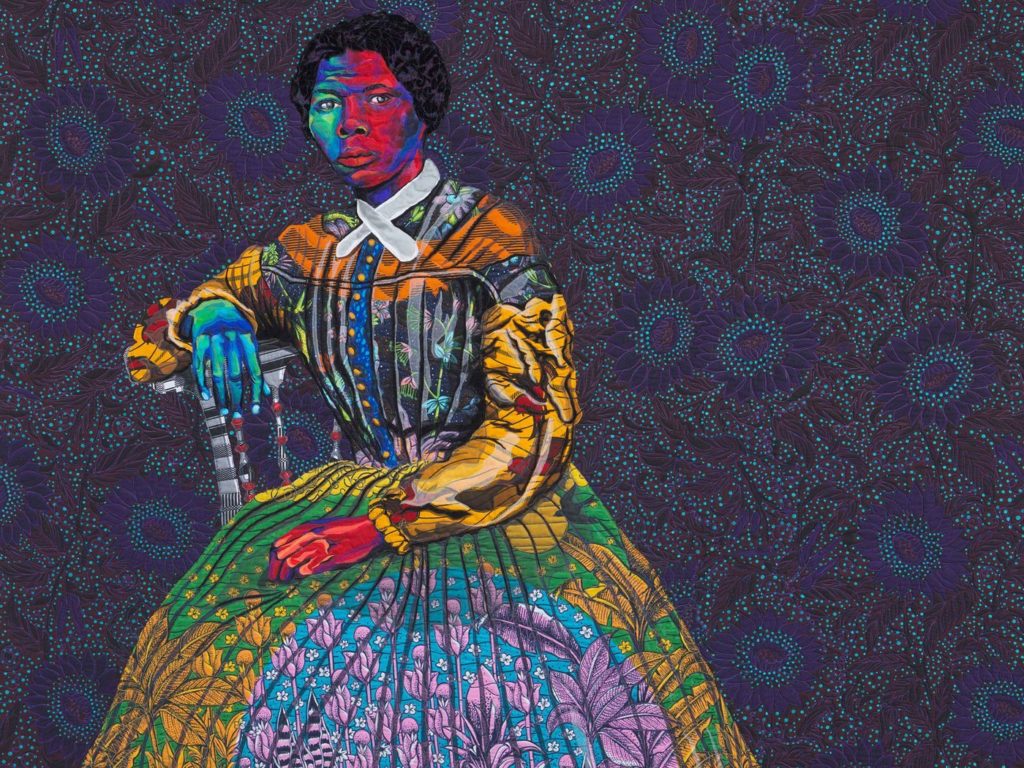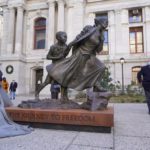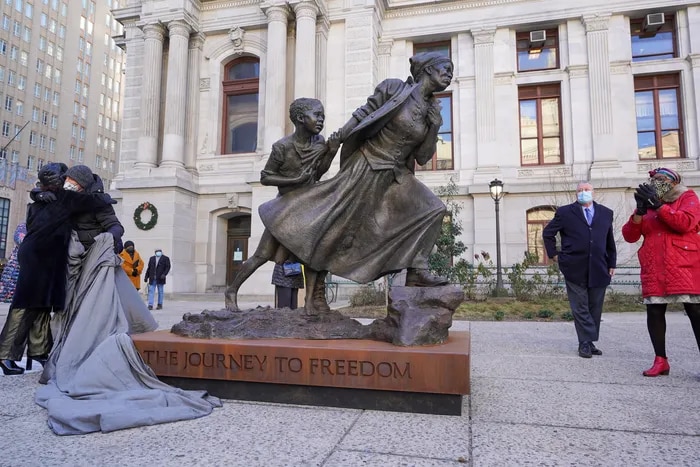
On Jan. 11, The City of Philadelphia unveiled a nine-foot bronze sculpture of Harriet Tubman at City Hall. Titled “Harriet Tubman, The Journey to Freedom,” the statue will be temporarily held outside the municipal building until the end of March — just as the city commemorates the anniversary of what would have been the freedom fighter’s 200th birthday.
Notably, Tubman’s new statue will also be in front of City Hall’s North Apron for Black History Month and Women’s History Month.
Tubman’s roots in Philly run deep, so the statue symbolizes a true celebration of the abolitionist’s life. After escaping slavery in Maryland in 1849, Tubman used the Underground Railroad’s network in the city to help free over 70 enslaved people.
Wesley Wofford, the artist behind the piece, detailed Tubman’s life journey by including the Pennsylvania state line and the Maryland-Delaware Pennisula is the shape of the monument’s base, according to The Philadelphia Inquirer. On that foundation, Tubman’s bronze figure “leads a young girl to freedom” — a set of shackles on the Maryland side of the base on the ground behind them.
“Philadelphia holds a specific relevance to Harriet’s story as the city she found safe harbor in after her escape from Maryland, as well as staging many of her returning raids to free others from the bondage of slavery,” Wofford said of the abolitionist’s connections to the city in a statement.
Along with the statue, the city’s celebration of Tubman and her legacy includes over 30 events organized by Philadelphia’s Office of Arts, Culture and the Creative Economy with local organizations and businesses. Additionally, 2019’s Harriet will be playing throughout February and March “with introductions from community activists and leaders.”
Mayor Jim Kenney said telling and celebrating stories like Tubman’s is essential to “connecting with our communities.”
“Harriet Tubman’s incredible legacy of heroism, resilience, hope, and activism is a story we can all learn from as individuals as well as a community,” Kenney noted. “The presence of stories like these in the form of public art is vital for learning and reflection, connecting with our communities and understanding our mutual histories.”




